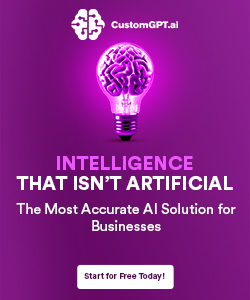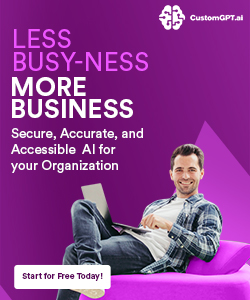Over the past few years, the rise of artificial intelligence has transformed numerous industries, presenting both opportunities and challenges. As you explore AI applications, it’s important to discern between ingenious implementations that add value and erroneous ones that lead to confusion or inefficiency. This blog post will guide you through key indicators that can help you evaluate the effectiveness of AI systems, allowing you to make informed decisions about their use in your projects and initiatives.
Defining Ingenious AI Implementations
The concept of ingenious AI implementations refers to innovative applications of artificial intelligence that effectively address specific challenges, enhance processes, or create value through unique solutions. These implementations typically leverage advanced algorithms, data analytics, and automation to drive results that exceed traditional methods. By recognizing the hallmarks of ingenious AI, you can better evaluate its potential and applicability within your organization or field of interest.
Characteristics of Ingenious AI
About ingenious AI implementations, the characteristics often include adaptability, efficiency, scalability, and user-centric design. These solutions demonstrate flexibility in the face of changing requirements, effectively streamline processes, expand effortlessly to accommodate growth, and prioritize the needs and experiences of users. Such traits enable these implementations to stand out as effective and innovative in a rapidly evolving technological landscape.
Successful Case Studies
Successful implementations of ingenious AI provide significant insights and examples for your understanding. Consider the following case studies:
- Netflix: Utilized AI algorithms to power its recommendation system, leading to a 75% increase in viewer engagement.
- Google: Developed AI-driven autonomous vehicles that achieved a 99% success rate in urban environments during testing phases.
- IBM Watson: Improved diagnostic accuracy in healthcare by over 30% in partnerships with leading hospitals.
- Amazon: Integrated AI in its supply chain management, reducing delivery times by 20% and optimizing inventory management.
Case studies exemplify how ingenious AI implementations can yield remarkable results across various industries. For instance, Netflix’s decision to harness AI for personalized recommendations not only improved user satisfaction but also increased viewing hours, demonstrating the economic impact of smart technology integration. Similarly, Google’s work on autonomous vehicles demonstrates how AI can transform infrastructure and urban mobility, setting a benchmark for the automotive industry. Exploring such examples will help you identify the immense potential of innovative AI applications in solving real-world problems.

Understanding Erroneous AI Implementations
There’s a growing concern over the misconceptions surrounding AI technology, leading to implementations that do not achieve the desired results. Erroneous AI implementations can stem from various factors, including inadequate data, unrealistic expectations, and lack of domain knowledge. By understanding these issues, you can better navigate the complex landscape of AI integration, avoiding these pitfalls in your projects.
Common Pitfalls in AI Projects
An AI project can easily fall into a range of traps, including insufficient data quality, neglecting the importance of data preprocessing, and failing to engage the necessary stakeholders. Additionally, many organizations underestimate the need for continuous monitoring and adjustments, resulting in systems that become obsolete or misaligned with changing needs.
Consequences of Erroneous Implementations
Understanding the ramifications of erroneous implementations is important for any AI initiative. When AI systems fail, they can lead to financial losses, reputational damage, and impaired decision-making processes that ultimately affect your organization’s growth and competitiveness.
A flawed AI implementation can result in severe outcomes, such as inaccurate predictions that misguide strategy and operations. This may not only cause direct economic harm but can also erode trust among stakeholders, diminishing their willingness to engage with technology. Moreover, you risk costly project delays and resource misallocation, which can stifle innovation and limit your organization’s potential in the rapidly evolving landscape of artificial intelligence.
Key Factors for Differentiation
Even as AI technology evolves, distinguishing between ingenious and erroneous implementations relies on several key factors. Consider the following:
- Intended Purpose
- Data Quality
- Scalability of Solutions
- Feedback Mechanisms
- Outcome Reliability
After weighing these factors, you can make informed assessments about specific AI applications.
Evaluation Criteria
Below are some vital criteria to evaluate AI implementations effectively. Focus on factors such as accuracy, efficiency, user experience, and adaptability to change. Understanding these metrics will help you formulate a clear picture of the AI’s functionality and reliability.
Role of Human Oversight
Across various AI applications, human oversight remains a critical element in ensuring their effectiveness and ethical considerations. You must be involved in the decision-making process and validation of results generated by AI systems.
Understanding the importance of human oversight involves recognizing that AI can operate with limitations, making it vital for you to review and interpret its outputs. Human judgment brings context and ethical reasoning, which helps mitigate potential issues stemming from biases in algorithms or data. Engaging in a collaborative approach allows you to harness the strengths of both AI technology and human insight, leading to more reliable and responsible outcomes.
Lessons Learned from Case Studies
Many valuable insights can be gained from exploring various case studies of AI implementations. Here are a few notable examples:
- Company A increased operational efficiency by 40% through AI-driven automation.
- Company B faced a 30% failure rate in AI algorithms due to poor data quality.
- Company C reduced customer service response time by 50% with chatbot integration.
- Company D’s AI implementation led to a 20% increase in sales, but user adoption was only 60%.
- Company E’s predictive analytics improved inventory management, reducing costs by 25%.
Analysis of Successful vs. Failed AI Implementations
With a careful analysis of successful and failed AI implementations, you can identify what makes a project thrive or falter. Successful implementations often hinge on clear objectives, robust data management, and ongoing monitoring, while failures frequently stem from poorly defined goals and inadequate testing. Understanding these patterns will significantly enhance your decision-making process.
Identifying Best Practices
With the insights gathered from various case studies, you are in a strong position to identify best practices that can lead to effective AI implementation. These practices encompass strategic planning, top-tier data governance, and consistent evaluations throughout the AI lifecycle.
Learned from numerous implementations, establishing best practices is vital for ensuring that your AI projects remain innovative and effective. Prioritizing thorough data analysis and encouraging interdisciplinary collaboration can set your efforts apart. Furthermore, adapting feedback loops and ensuring scalability will ultimately strengthen the reliability of your AI initiatives, leading to long-term success.
Future Trends in AI Differentiation
Despite the rapid advancements in artificial intelligence, differentiating between ingenious and erroneous implementations will remain a pertinent issue. As we advance, new methodologies and frameworks for evaluating AI systems will emerge, allowing you to better discern their effectiveness and impact. These trends will focus on transparency, accountability, and user-centric design, enabling you to make informed decisions about the technologies you choose to integrate into your workflows.
Emerging Technologies
By leveraging emerging technologies like explainable AI and advanced analytics, you can gain deeper insights into how AI systems operate. These tools will empower you to understand the reasoning behind AI decisions, making it easier to identify innovative implementations while mitigating the risks associated with potential errors.
The Role of Ethics in AI
On the forefront of AI differentiation lies the ethical considerations that shape its development and deployment. As AI becomes more integrated into your daily life, understanding the moral implications can guide your choices about which systems to adopt and trust.
Considering the growing influence of AI in various sectors, ethical frameworks are becoming important. You must evaluate not only the performance of AI systems but also their societal impact, data privacy concerns, and adherence to ethical guidelines. Engaging with ethical discussions will empower you to advocate for responsible AI practices while also fostering innovation that aligns with your values and the greater good.
To wrap up
With this in mind, differentiating between ingenious and erroneous AI implementations requires you to critically analyze the objectives, methodologies, and outcomes of each application. Focus on their real-world effectiveness, ethical considerations, and user impact. By doing this, you can assess whether an AI system genuinely enhances productivity and decision-making or if it perpetuates bias and inefficiencies. Ultimately, developing your understanding of these distinctions empowers you to advocate for better AI solutions that can be both innovative and responsible.
FAQ
Q: What are the key characteristics that differentiate ingenious AI implementations from erroneous ones?
A: Ingenious AI implementations typically exhibit innovative problem-solving capabilities, adaptability to diverse scenarios, and the ability to provide accurate results based on data analysis. These systems are designed with a strong understanding of user needs and context, which allows them to enhance user experiences effectively. In contrast, erroneous AI implementations often lack this context-awareness, leading to inaccurate outcomes and limited usability. Signs of erroneous AI may include poor data handling, lack of understanding of the domain, and an inability to evolve with user feedback.
Q: How can organizations assess whether their AI systems are functioning ingeniously or erroneously?
A: Organizations can evaluate their AI systems by conducting rigorous testing and evaluation against predefined performance metrics. This includes analyzing the system’s output quality, its ability to generalize from training data, and how well it learns from real-world interactions. Feedback loops should also be established to gather user insights and assess satisfaction. Additionally, auditing processes that track decision-making pathways within the AI can highlight areas of innovation versus errors, ultimately guiding necessary improvements.
Q: What strategies can be employed to improve an erroneous AI implementation?
A: To enhance an erroneous AI implementation, organizations can start by revisiting the training data to ensure it is diverse, accurate, and representative of the target environment. Incorporating more robust machine learning algorithms that can better learn from this data is also beneficial. Moreover, implementing iterative testing and refining processes along with user feedback mechanisms can help identify flaws and areas for improvement. Collaborating with domain experts during the design and implementation phases can further ensure that the AI system addresses real user needs effectively.





